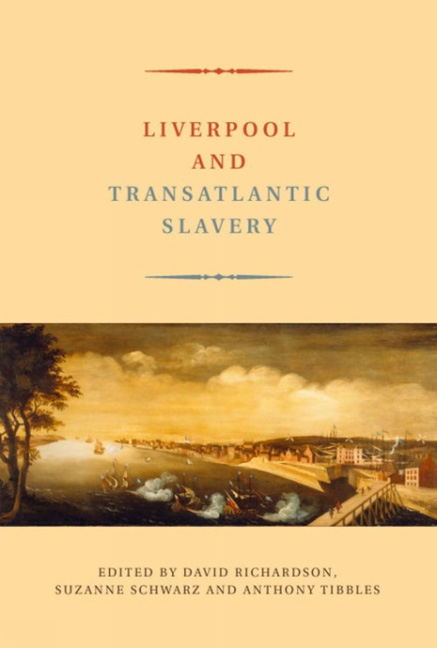Book contents
- Frontmatter
- Content
- Preface
- Notes on Contributors
- Introduction Liverpool, the African Slave Trade and Abolition Thirty Years On
- 1 Liverpool's Dominance in the British Slave Trade, 1740–1807
- 2 African Agency and the Liverpool Slave Trade
- 3 Human Capital in the British Slave Trade
- 4 Liverpool's Slave Trade to the Colonial Chesapeake: Slaving on the Periphery
- 5 The Liverpool Slave Trade, Lancaster and its Environs
- 6 The Atlantic Slave Trade and African Ethnicities in Seventeenth-Century Jamaica
- 7 The Wealth and Social Aspirations of Liverpool's Slave Merchants of the Second Half of the Eighteenth Century
- 8 ‘Cemented by the Blood of a Negro’? The Impact of the Slave Trade on Eighteenth-Century Liverpool
- 9 Commerce, Civilization and Christianity: The Development of the Sierra Leone Company
- 10 Abolitionism in Liverpool
- Index
6 - The Atlantic Slave Trade and African Ethnicities in Seventeenth-Century Jamaica
- Frontmatter
- Content
- Preface
- Notes on Contributors
- Introduction Liverpool, the African Slave Trade and Abolition Thirty Years On
- 1 Liverpool's Dominance in the British Slave Trade, 1740–1807
- 2 African Agency and the Liverpool Slave Trade
- 3 Human Capital in the British Slave Trade
- 4 Liverpool's Slave Trade to the Colonial Chesapeake: Slaving on the Periphery
- 5 The Liverpool Slave Trade, Lancaster and its Environs
- 6 The Atlantic Slave Trade and African Ethnicities in Seventeenth-Century Jamaica
- 7 The Wealth and Social Aspirations of Liverpool's Slave Merchants of the Second Half of the Eighteenth Century
- 8 ‘Cemented by the Blood of a Negro’? The Impact of the Slave Trade on Eighteenth-Century Liverpool
- 9 Commerce, Civilization and Christianity: The Development of the Sierra Leone Company
- 10 Abolitionism in Liverpool
- Index
Summary
Our knowledge of the Atlantic slave trade has expanded considerably in recent years. We know with great precision the numbers of Africans shipped across the Atlantic and the numbers who arrived in the Americas. We also have a fairly good idea about where in Africa these people originated. Our understanding of the African side of the equation has especially increased, making it impossible to dismiss the significance of Africa and African agency in the Atlantic slave trade as cavalierly as we were accustomed to do. But one area of the transformation of Africans into African–American slaves remains relatively little understood. We still know little about the process by which Africans were sold, were bought by merchants and planters and were sent from ships to farms, pens and plantations. As a result of our lack of attention to how Africans were sold on arrival in the Americas, we have overestimated the extent to which Africans from concentrated communities in Africa were able to recreate ethnic bonds in America that resembled those that they had left behind in Africa. Although abundant evidence exists that there were sufficient commonalities between Africans involved in the Atlantic slave trade for slave cultures that were distinctly related to specific African cultures to develop in the seventeenth and eighteenth centuries, what current scholarship on the movement of Africans to the Americas underestimates is the extent to which the process by which Africans were bought by planters and placed on agricultural properties made it likely that slave populations would be heterogeneous groupings of slaves from a variety of ethnic backgrounds.
In this article, I examine the ways by which Africans were purchased in seventeenth–century Jamaica with particular reference to how Africans from various embarkation points in West Africa were distributed among Jamaican slave populations. I show that Africans coming to Jamaica on Royal African Company ships came from a variety of African regions, making the Jamaican slave population ethnically diverse, although not so ethnically diverse as to prevent slaves from being able to develop cultures heavily influenced by a shared African inheritance.
- Type
- Chapter
- Information
- Liverpool and Transatlantic Slavery , pp. 138 - 163Publisher: Liverpool University PressPrint publication year: 2007



